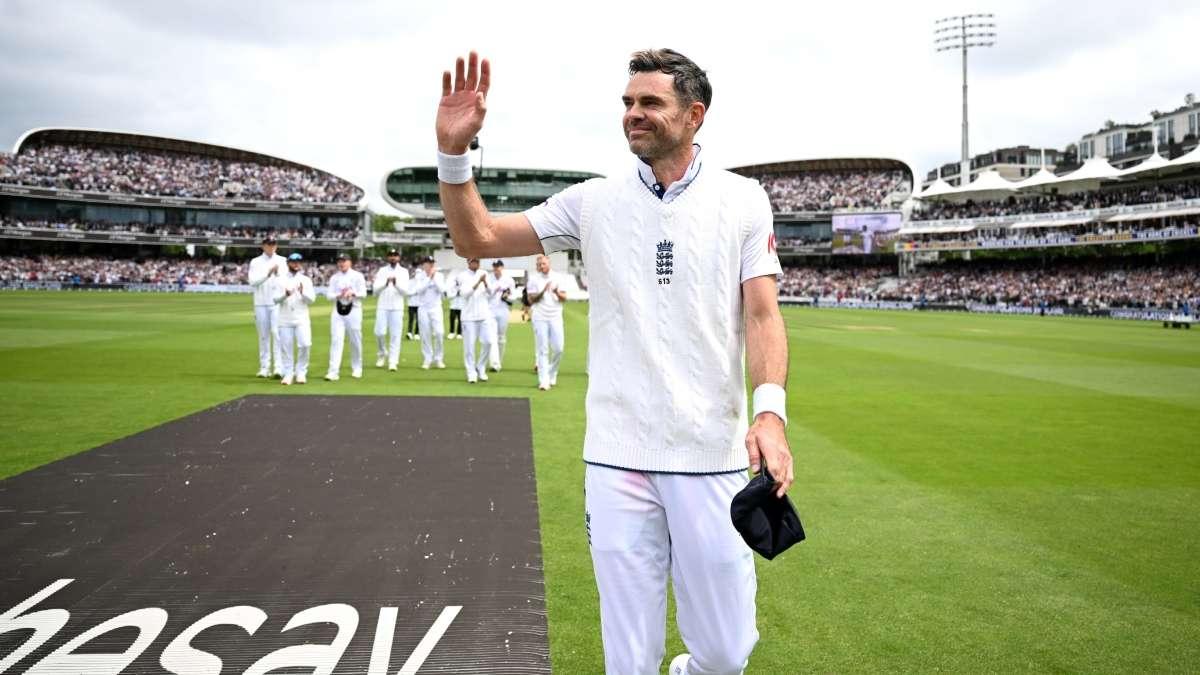
England legend James Anderson has bid a poignant farewell to his illustrious 21-year-long Test career. The 41-year-old cricketing stalwart earned his 188th and final Test cap for England in their opening game against the West Indies, which commenced on July 10. Anderson’s remarkable journey saw him pick up four crucial wickets in his last appearance, bringing his career total to an astounding 704 wickets.
Anderson’s incredible achievement of being the only fast bowler in Test history to surpass 700 wickets cements his legacy as one of the game’s greatest. His long-term bowling partner, Stuart Broad, remains a distant second on the list of pacers with 604 Test wickets.
Reflecting on Anderson’s departure, it becomes evident that his decision was influenced by the management’s wish to transition to newer talent, with Anderson making “peace” with their decision to move on. While Anderson’s immense contributions to English cricket are lauded, a question arises: Is he the oldest player ever to compete in a Test match at the iconic Lord’s venue?
Many hail Anderson for his longevity, especially considering he was a fast bowler who showcased remarkable tenacity well into his late 30s and early 40s. However, despite this accomplishment, Anderson is not the oldest player to have played a Test match at Lord’s.
According to ESPNCricinfo, there are no fewer than 20 players who were older than Anderson when they competed in a Test match at the esteemed England venue. The oldest among them is former England captain WG Grace, who was nearly 48 years old when he led his team in a Test match against Australia in 1896. Additionally, other players senior to Anderson in age include England’s Jack Hobbs (aged 43), Australia’s Warren Bardsley (also 43), and South Africa’s Dave “Old Man” Nourse (45), among others.
While Anderson may not hold the title of the oldest player at Lord’s, he is recognized as the oldest pace bowler with genuine speed to feature in a Test at the venue, as Dave Nourse was classified as a medium pacer according to ESPNCricinfo.
In his final Test appearance, Anderson’s four wickets added to his impressive tally of 704, positioning him behind only Muttiah Muralidaran (800 wickets) and Shane Warne (708 wickets) in the all-time list of Test wicket-takers. Unfortunately, Anderson fell just short of surpassing Warne’s total.
.
Beyond Test cricket, Anderson also boasts the title of the leading wicket-taking pace bowler in international cricket, with an impressive 991 scalps across all formats. He trails only Muralidaran (1347 wickets) and Warne (1001 wickets) in the all-time international wicket count.
As England cricket moves forward without their legendary bowler, the indelible mark Anderson leaves on the sport is undeniable. His dedication, skill, and resilience have inspired countless budding cricketers and left an enduring legacy that will be remembered for generations to come.
Anderson’s journey from promising talent to cricketing legend is a testament to his unwavering commitment to the sport. From his debut in 2003 against Zimbabwe to his final match against the West Indies, Anderson has consistently demonstrated his ability to adapt, evolve, and excel in a dynamic and ever-changing cricketing landscape.
Throughout his career, Anderson encountered numerous challenges, from injuries to form slumps. Yet, his perseverance and work ethic allowed him to overcome these obstacles and maintain his status as one of the premier bowlers in the world. His strategic prowess, combined with his physical fitness and mental fortitude, made him a formidable opponent for batsmen across the globe.
As England’s cricketing fraternity reflects on Anderson’s contributions, his legacy serves as a guiding light for future generations. Young cricketers will look up to Anderson not just for his impressive statistics, but for his dedication, sportsmanship, and the passion with which he played the game.
In the end, while James Anderson may not have been the oldest cricketer to grace the field at Lord’s, he undoubtedly stands tall as one of the most influential and celebrated figures in the history of cricket. His departure marks the end of an era, but his impact on the sport will be felt for many years to come.










